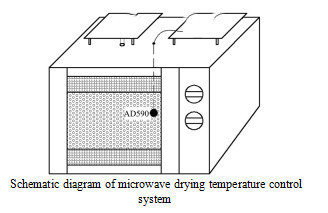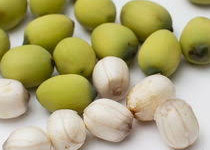Effect of drying methods on lotus seed quality
Absrtact: Five different drying methods of lotus seeds were studied, including microwave drying equipment, vacuum microwave drying, vacuum freeze drying, hot air-vacuum microwave drying and hot air-air extrusion drying, and their effects on the physical properties, main nutrients and microstructure of lotus seeds drying products were studied.

The results showed that the order of total color difference was vacuum freeze drying > Hot air-air extrusion drying > hot air drying > vacuum microwave drying > Hot air-vacuum microwave drying; the order of hardness was hot air drying > vacuum microwave drying > Hot air-vacuum microwave drying > Hot air-air extrusion drying > vacuum freeze drying, and the order of brittleness was vacuum freeze drying < vacuum microwave drying. Drying < hot air drying < hot air-vacuum microwave drying < hot air-air expanding drying < hot air-air expanding drying; the order of specific volume is vacuum freeze drying > Hot air-air expanding drying > Hot air-vacuum microwave drying > vacuum microwave drying > hot air drying.
The order of rehydration was vacuum freeze-drying > Hot air-air extrusion drying > Hot air-vacuum microwave drying > vacuum microwave drying > vacuum microwave drying > hot air drying; the protein and crude fiber content of five products were similar; the honeycomb structure was observed in the products of vacuum freeze-drying, hot air-vacuum microwave drying and hot air extrusion drying. The vacuum microwave drying product still has a compact structure, with only a small amount of voids.
In conclusion, hot air-air extrusion drying can be used as a suitable processing method for developing lotus seed leisure food.
Key words: lotus seed microwave drying; drying method; quality characteristics

The lotus seed is the fruit of the lotus seeds of the water lily family after being husked and cored. It is a special aquatic vegetable widely cultivated in China, and it is also a traditional nutritious food.
Lotus seed is rich in nutrition. It contains not only protein, carbohydrate, vitamin, many essential amino acids and a large number of trace elements such as calcium, phosphorus, iron and zinc, but also flavonoids, water-soluble polysaccharides, superoxide dismutase and other bioactive components. It has been listed by the Ministry of Health in the first batch of products which are both food and medicine. In functional food, medicine and cosmetics, lotus seed contains flavonoids, water-soluble polysaccharides and superoxide dismutas The products have broad prospects for development and utilization. In addition to fresh food, lotus seeds have been mainly in the form of dry products.
At present, the vast majority of lotus seeds are still processed by traditional sun drying or hot air drying. Although the process is simple, it takes a long time and consumes a lot of energy. At the same time, the dried lotus seeds also have many defects, such as inconvenience to eat and great loss of nutrition.
With the emergence of new drying technologies such as microwave drying, vacuum freeze-drying and airflow puffing, the traditional dry products have gained new vitality, which not only greatly improves the drying efficiency, increases the retention of nutrients, but also makes the products obtain new texture and taste, and become a new leisure product with convenient eating. These new drying technologies have their own characteristics, and their adaptability to different raw materials is also different, especially for lotus seed, which needs to keep its complete form. In this study, a variety of drying methods were used to drying lotus seeds and compared to provide a reference for the development of new processing technology of lotus seeds.